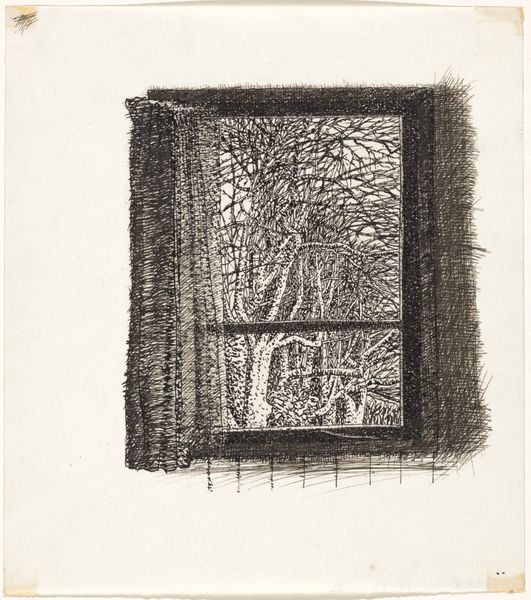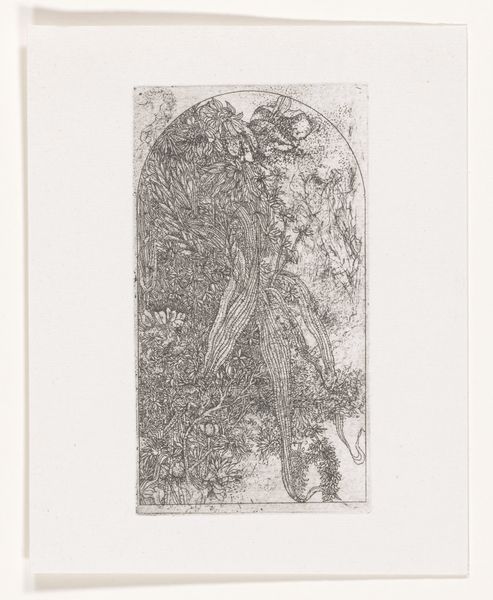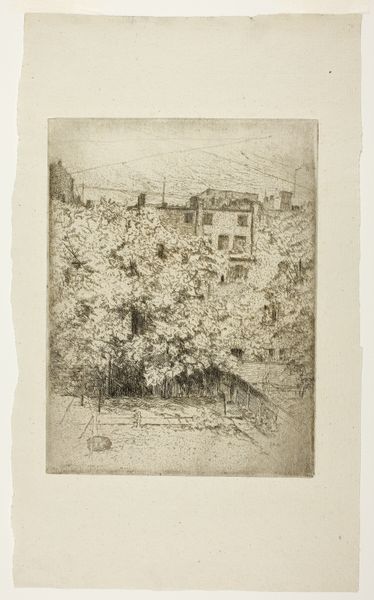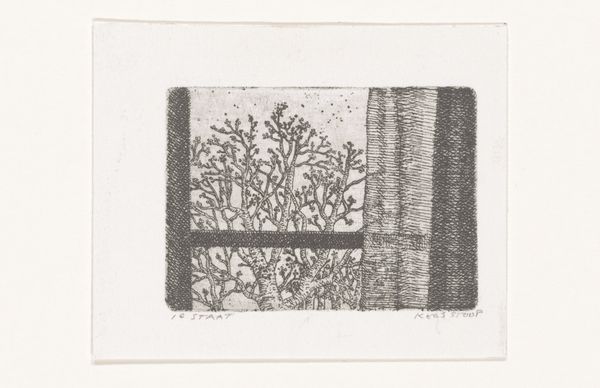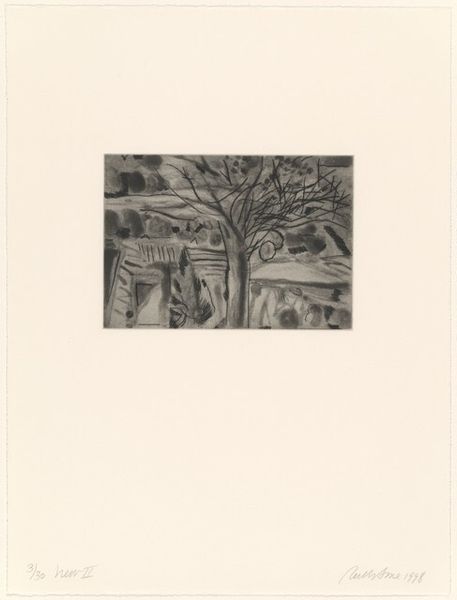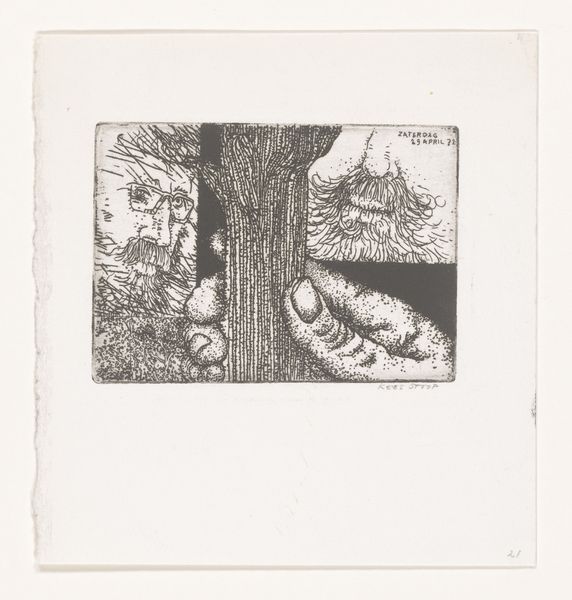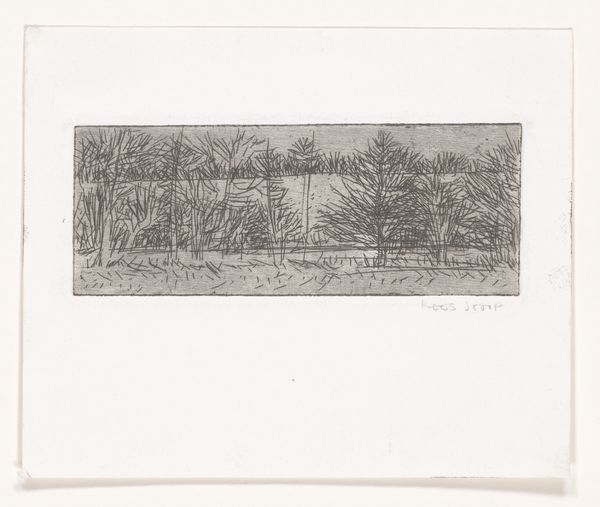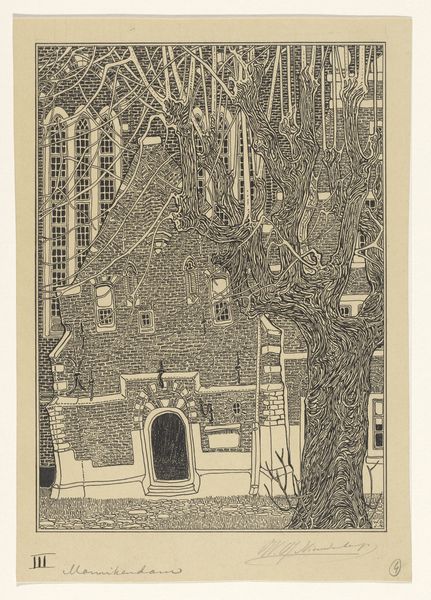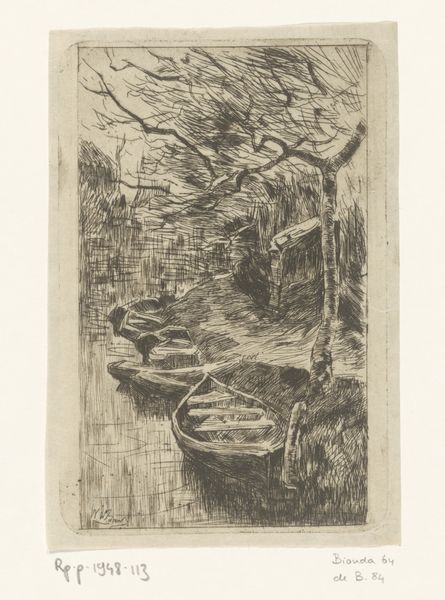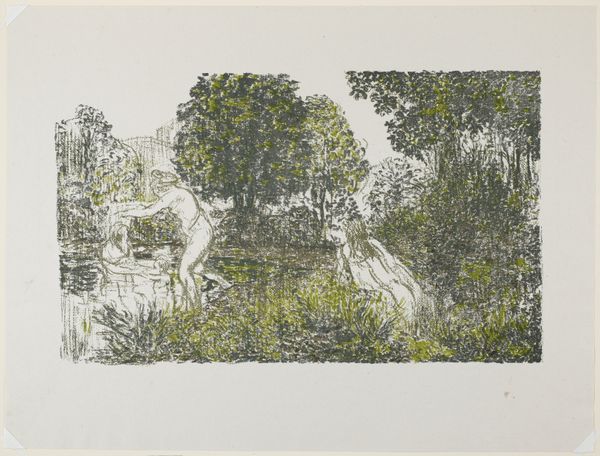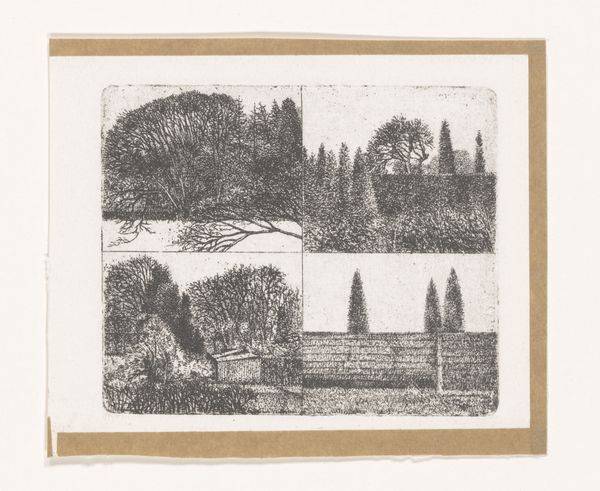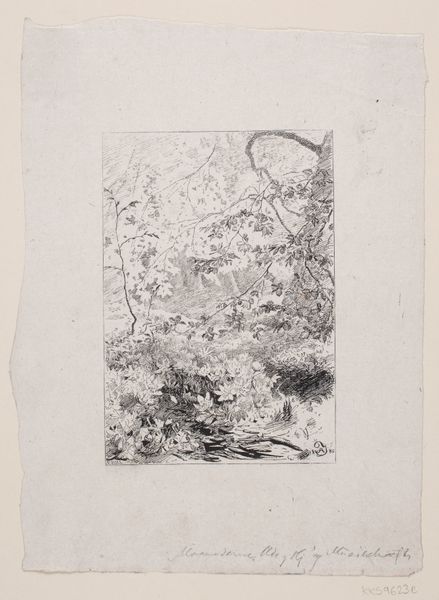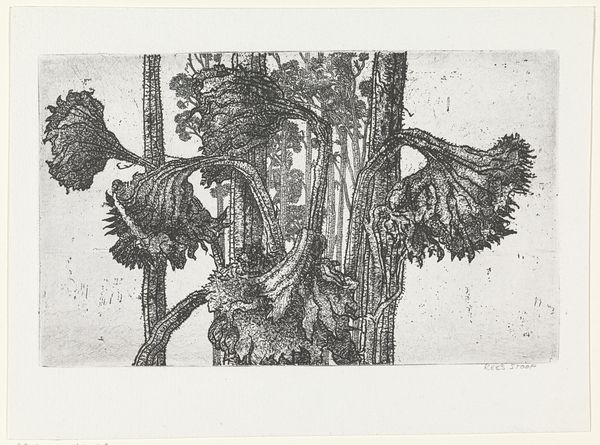
drawing, print, etching, ink
#
drawing
# print
#
etching
#
landscape
#
ink
#
realism
Dimensions: height 175 mm, width 157 mm, height 154 mm, width 128 mm
Copyright: Rijks Museum: Open Domain
Curator: Here we have Kees Stoop's etching from 1987, "Boom achter hekje," which translates to "Tree behind fence." The work resides here at the Rijksmuseum and employs a variety of drawing and printmaking techniques, notably etching and ink. Editor: My first impression is this fragmentation – it’s almost like looking at a landscape through a fractured lens, each tiny window giving a slightly different perspective. There's a controlled chaos to it that I find really intriguing. Curator: Yes, that fragmentation is quite deliberate. Stoop, in his exploration of realism, presents not one single perspective, but many interlocking views, almost like a photographic contact sheet exploring the possibilities of how we see the tree in its physical context. It evokes the rapid shifts of urban life and the way memory assembles the pieces of lived space. Editor: And what of that "fence?" What are its connotations within Dutch society in 1987? The presence of such an object raises questions of division, ownership, and perhaps even exclusion, both environmental and socio-economic. I’m particularly interested in how Stoop, perhaps unconsciously, speaks to social fragmentation through this grid-like format. Is the tree enclosed, or is it breaking free? Curator: The tree itself has always been symbolically loaded: connecting earth and sky, humanity, and spirituality. To me, its position behind a fence is also commentary on Dutch land use; how even nature is structured, contained, sometimes even possessed within a society structured on private ownership. I see in the tree a potent symbol for environmental struggles of that time. Editor: The date, 1987, is significant, too, coming at a moment of rising ecological awareness globally. Thinking about the AIDS crisis and other socio-political issues brewing at the time, is Stoop using this seemingly pastoral scene to highlight our anxieties, our fragmented understanding of a world in flux? Curator: Precisely! The fragmented presentation mirrors that fractured understanding, a subtle nod to how political forces can shape how we perceive our environment, in all its messy beauty. Editor: It pushes me to question our impulse to compartmentalize and organize. Does this division empower, or further dislocate? Curator: Well said. Ultimately, the artwork pushes us to confront these critical questions, not just of aesthetics but of societal structure, too. Editor: Agreed. Stoop's work makes us mindful that seemingly simple landscapes hold multitudes of questions waiting to be engaged.
Comments
No comments
Be the first to comment and join the conversation on the ultimate creative platform.
